MY PLACE. MY FUTURE.
A plan for living, working and playing north of the river.







This is my home – I love living in the Northern Suburbs and I want the very best future for my family too.
We are a very proud, resilient, diverse, vibrant, innovative and heartfelt community who are very committed to seeing ongoing improvements within the Northern Suburbs for our young people, older people, families and new people arriving. Improvements, in particular, that will have long-lasting outcomes on health and wellbeing, employment opportunities and economic growth.
As mentioned so often from community members:
This is my home – I love living in the Northern Suburbs and I want the very best future for my family too.
Denise Delphin Northern Suburbs Community Centre General ManagerNot many people realise that those who live in the Northern Suburbs represent approximately one-third of the population within the Launceston municipality. With such a large representation, the My Place My Future Plan is an important part of achieving the vision of the Launceston City Deal; ensuring that by 2022, Launceston will be one of Australia’s most liveable and innovative regional cities.
The My Place My Future Plan is a very unique undertaking; it is a place-based approach that builds upon the City Deal foundation and brings together the Northern Suburbs communities, Local, State and Federal governments. The initial intention of the My Place My Future Plan, to be led by the community, has remained a critical focus throughout its development, resulting in a document that the communities in the Northern Suburbs should feel proud of.
We would like to praise the many people from community, not-for-profit organisations and government agencies that contributed to the My Place My Future Plan. This document is a credit to your passion and dedication, and that is what will enable us to work together to create positive changes.
My Place My Future Steering Committee
“THE YOUNG PEOPLE ARE THE FUTURE OF THE AREA”
The project to develop the My Place My Future Plan was led by the City of Launceston, with support provided by the Office of the Coordinator-General.
The My Place My Future Plan is a key commitment under the Launceston City Deal. The Launceston City Deal is a major investment in the future of Launceston and the surrounding region. It sets out a vision for a lively city with better education and job opportunities, regional economic growth and rising incomes. Over the longer term, the City Deal will help position Launceston as one of Australia’s most liveable and innovative regional cities. To achieve this vision, the Commonwealth Government, the Tasmanian Government and the City of Launceston are cooperating to deliver investment and practical actions that build on Launceston’s strengths and tackle key challenges.
One of the key questions to arise in the development of the My Place My Future Plan was how the link to the City Deal made the approach unique. There are a few different answers to this:
• It led to conversations between people that may otherwise never have occurred. This may have been due to different roles, levels of government, areas of expertise, or geographical location. This led to new ways of thinking and bringing work together.
• It led to open conversations within, and across, the different levels of government. Some of the considerations identified are complex, and the effects of any interventions may not be seen for many years. But the important thing is that they are being acknowledged and talked about.
• The governance and reporting structure of the City Deal has meant that there has been clear accountability throughout the process.
All of these elements working together have enabled the creation of a foundation for change.
The City of Launceston, through a partnership with the Bank of I.D.E.A.S., uses an asset-based community driven efforts (ABCDE) approach to develop Learning Sites throughout the Launceston municipality.
The Learning Sites have been the building blocks for the My Place My Future Plan, particularly when it comes to relationships. The Learning Sites have supported the My Place My Future consultations and engagement, and through the empowerment of the residents, helped the team better understand the concerns of the communities. Both projects are complementary in nature and support the work for the community at a grassroots and planning perspective.
The ABCDE Learning Site model shifts peoples’ thinking from needs and deficiencies to assets and capacities, and from consumer to co-producer, co-owner and citizen. Throughout the process, facilitators work with residents to discover, map, connect and celebrate their diverse range of community assets. These assets are then harnessed to complete actions that strengthen the communities.
The Bank of I.D.E.A.S. is an international community and economic development consultancy company.

“ALL THESE THINGS HAVE ENABLED THE CREATION OF A FOUNDATION FOR CHANGE”
The project to develop the My Place My Future Plan was led by the City of Launceston, with support provided by the Office of the Coordinator-General. Reports were periodically provided to the City Deal Executive Board, which consists of the University of Tasmania (UTAS), along with local, state and federal government representatives.
Additionally, a Northern Suburbs Steering Committee was developed. The purpose of the Northern Suburbs Steering Committee is to “ensure that the commitments outlined in the Northern Suburbs Revitalisation Plan are aligned with the highest priority needs of the community”
Members of the Northern Suburbs Steering Committee include:
• City of Launceston representatives
• Skills Tasmania
• Communities for Children Initiative
• TasCOSS
• Office of the Tasmanian Coordinator-General
• UTAS
• Northern Tasmanian Development Corporation
• Northern Suburbs Community Centre Inc.
• Starting Point Neighbourhood House
• Launceston Chamber of Commerce
• Migrant Resource Centre
• Primary Health Tasmania
• Child Health and Parenting Service
Integration with other strategies and plans
The My Place My Future Plan will not duplicate the work
of other strategies and plans; instead, the approach is to look for commonalities and identify opportunities for them to work together.
An example of this is the Launceston Cultural Strategy; both documents will complement each other to ensure that the best outcome is achieved for the Northern Suburbs and the Launceston municipality.
That when the deadly smallpox broke out in Launceston in 1887 a hospital was quickly erected on the Mowbray racecourse as an isolation hospital. Eight people died in the two months it took to get the outbreak under control, the victims being buried in graves nearby.
Everyone should be able to have access to education that supports healthy living and following healthy lifestyles. By creating healthier people you will help create healthier communities.

Capturing the story of a region as diverse, rich and dynamic as the Northern Suburbs of Launceston is not easy. Indeed, like the individuals who live, work and play here, everyone’s stories are unique and ever-changing. However, it is important that an overall picture of life in the Northern Suburbs is captured and presented in a way that allows others to gain an insight into the area. This section will draw together all sorts of information to enable people to understand the Launceston Northern Suburbs.
Of the 66,802 people who live in the City of Launceston approximately 32% of these live within the Northern Suburbs.

Data that refers to the City of Launceston is based upon the definition used by .id in May 2019. This definition can be viewed by accessing: https://profile.id.com.au/launceston.
That the 1999 Miss Australia was born and raised in Ravenswood? Kathryn Hay was to be the second last Miss Australia but later became the first woman of Aboriginal descent to be elected to the Tasmanian parliament. She served one four year term as a Labor member for Bass.
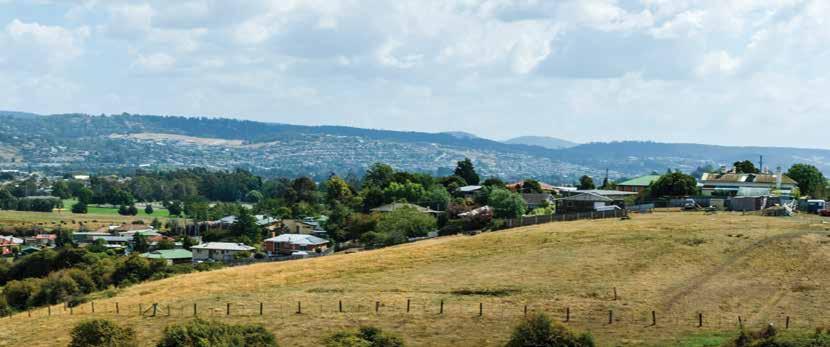
 Newnham
Mayfield
Rocherlea
Mowbray
Invermay
Ravenswood
Waverley
Newnham
Mayfield
Rocherlea
Mowbray
Invermay
Ravenswood
Waverley
Source: Australian Bureau of Statistics, Census of Population and Housing 2011 and 2016.
All of the suburbs have a lower percentage of households with internet connection compared to the City of Launceston and Australia.
All of the suburbs have a higher percentage of Aboriginal and Torres Strait Islander peoples when compared to the City of Launceston. This is most prominent in Mayfield (6.5%), Rocherlea (13.1%) and Ravenswood (8.7%).
When compared with the City of Launceston, four of the seven suburbs have a higher percentage of people that require assistance with core activities. This includes Mayfield (7.0%), Rocherlea (13.3%), Ravenswood (8.5%) and Waverley (6.7%).
There are three cohorts that everyone working in the Northern Suburbs should be aware of and consider if there is a need for targeted actions. These are:
• Culturally and Linguistically Diverse community;
• People who have a need for assistance with core activities; and
• Aboriginal and Torres Strait Islander peoples.
Northern Suburbs usual resident population is 20,917
Each of the suburbs are unique; this is obvious when looking at the biggest differences in data when compared to the City of Launceston.1 Rental Stress is defined as per the NATSEM (National Centre for Social and Economic Modelling) model as households in the lowest 40% of incomes, who are paying more than 30% of their usual gross weekly income on rent.

The city of Launceston is at the heart of the traditional homeland of the Stoney Creek peoples.
The city of Launceston is at the heart of the traditional homeland of the Stoney Creek peoples.
The city of Launceston is at the heart of the traditional homeland of the Stoney Creek peoples.




The Tyerrernotepanner, Leterremairrener and Panninher clans have lived here as custodians for many thousands of generations, above the floodplains where the three rivers, Kunermurlukeker, Pleepertoommelar and Lakekeller meet.

The Tyerrernotepanner, Leterremairrener and Panninher clans have lived here as custodians for many thousands of generations, above the floodplains where the three rivers, Kunermurlukeker Pleepertoommelar and Lakekeller

The Tyerrernotepanner, Leterremairrener and Panninher clans have lived here as custodians for many thousands of generations, above the floodplains where the three rivers, Kunermurlukeker Pleepertoommelar
If you want to know more, visit the First Tasmanians Our Story permanent exhibition at Queen Victoria Museum and Art Gallery (QVMAG). This is located at 12 Wellington Street, Launceston, and is open between 10am and 4pm, seven days a week, entry is free.
1813
First building at Mt Stuart
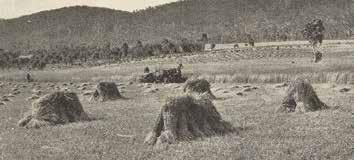
1833
John Griffiths builds first bridge at Tamar Street
1817
Punt across North Esk for George Town Road is instigated
1977
Kelsall and Kemp closes
1980
Australian Maritime College opens.
1985
1916 Charles Street bridge opened
1904
Coogans furniture factory opens in Forster Street
1911
Trams start running to Retreat Hotel
1922
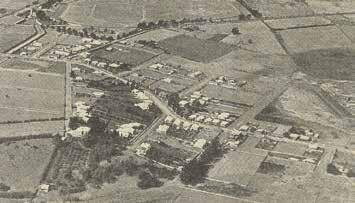
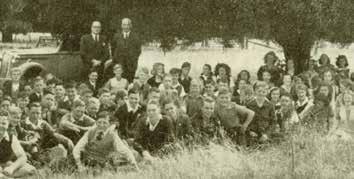
Railway roundhouse is opened – said to be the largest in the Southern Hemisphere
1917
Kings Wharf opens
1969
(April) Liquid oxygen tanker explodes at MTM Industries killing three men
1954
Mayfield Residents Action Group refuses to pay rent until water and sewerage issues resolved
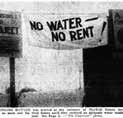
1958
Wheat silos erected in Lindsay Street
2018
Suburbs of Newnham, Mayfield and Rocherlea become part of Launceston city. Lilydale municipality scrapped
2017
Commitment to the My Place My Future Plan is obtained as all three levels of government officially signoff on the Launceston City Deal
Planning for the My Place My Future Plan commences
1858
Daniel Harris granted a licence for the Mowbray Inn
1835
Matthew Friend builds Newnham Hall
1864
Town of Invermay proclaimed
1889
Invermay Primary School opens
1891
St Finn Barrs School established by Mons. Beechinor
1887
Small pox isolation hospital established at Mowbray at the racecourse
1924
Mowbray moved from St Leonards into Launceston municipality
1923
Kelsall and Kemp opens
1924
1865

First Launceston Cup held at Mowbray
1868
Duke of Edinburgh turns first sod on the railway at Inveresk
1886
Inveresk Park opens
1884
Railway wharf built
1925
St Finn Barr’s burns down. Rebuilt and opened 1927
Launceston Grammar opens at Mowbray after moving from the city
1950
Federal Government’s Migrant Hostel opens at Mowbray
1951
James Nelsons opens
1873
Waverley Woollen Mills established
1927
Mowbray Heights Primary School opens
1948
Community School (later GV Brooks Community School) opens at Newnham
1929
Inveresk flooded, Mowbray cut off
2019
My Place My Future Plan is launched
1949
Repco Bearing factory at Mowbray begins production
1937
Star Theatre opens
In particular, Mowbray has long been a place for a large number of new arrivals to Launceston
Mowbray has long held a special role within the broader Launceston region; it has been a home for many newly arrived migrants. After World War II, industries such as James Nelson’s weaving mill supported immigration for experienced weavers from England. To house these employees, the Commonwealth Government built a migrants’ hostel at Mowbray, in the area that is today’s Dover Village.
The establishment of the Australian Maritime College and the University of Tasmania at Newnham in the 1980s and the 1990s saw Mowbray become home to hundreds of overseas students, drawn from the Middle East, SouthEast Asia and the Indian sub-continent. In the early 2000s another wave of migrants made Mowbray home, this time various groups of refugees arriving under Australia’s Humanitarian Program, often fleeing from civil wars and political unrest. This migration is ongoing, with many migrants to Tasmania welcomed in Mowbray.
Source: Australian Bureau of Statistics, Census of Population and Housing 2011 and 2016
The Northern Suburbs are also home to a large population of Aboriginal or Torres Strait Islander peoples
of the people in the Northern Suburbs identified themselves as Aboriginal or Torres Strait Islander.

and Torres Strait Islander peoples are most prominent in Mayfield (6.5%), Rocherlea (13.1%) and Ravenswood (8.7%).
The Ravenswood property was owned by David M’Gowan who also owned at one stage the distillery that gave Distillery Creek its name. M’Gowan’s property surrounded the distillery and was at the southern end of what is now the suburb of Ravenswood. Newnham gets its name from Newnham Hall, built by Matthew Curling Friend around 1833. The Hall overlooked a stretch of the Tamar River that was, at the time, known as Newnham Reach. The Hall is still there, now a part of the Australian Maritime College.

A childcare conference in Launceston in 1979 was the catalyst for an Aboriginal Childcare centre and after much research, surveys and fundraising, TACCA opened on 23 June 1983. Originally located in the old Waterside Workers Building in Lindsay Street the Centre was unique to Tasmania at the time, and one of only three in Australia. TACCA was set up as a grass roots community organisation that fulfilled a need for Aboriginal children from the local area and the Bass Strait Islands to have access to children’s services as needed and that the children remain connected as an extended family, of major importance was the children would know their community and culture ongoing, this is still the case today.
TACCA nurtures children’s safety and wellbeing within the context of their family connections, communities and cultural identity, as well as provides an environment for children to grow up knowing and being proud of their culture, and respectful of others and their cultures. For example, children learn palawa kani (Tasmanian Aboriginal language) as well as basic words and phrases from other languages of current children/families using the service.
“I tried to teach all of our children that because they are Aboriginal, they’re special” - Auntie Molly Mallett, the founder of TACCA. Given the importance of family in Aboriginal culture, it is even more fitting that TACCA is today headed up by Auntie Molly’s granddaughter. It is a brilliant example of residents of the north identifying a need, and addressing this a sustainable way that continues to this day, now located in Mowbray.

The Northern Suburbs and its community have great potential - already great things happening with community gardens and farms. Build on the unique culture and diversity here.
What approach was used to develop the Plan?
The process to develop The My Place My Future Plan (the Plan) was designed to ensure that:
• All stakeholders had the opportunity to have input;
• There was accountability and transparency over the process;
• It recognised information that was already available, but also continuously obtained more;
• All new information was used to check the validity of information previously received; and
• It recognised, and worked within, constraints, such as time and budget.
Where did the information come from to inform the Plan?
A number of different tools and strategies were used to gather the information that informed the Plan. These include:
• Desktop review and analysis of available literature and data;
• Targeted consultation with subject matter experts;
• Commissioned reports;
• Strategic partnerships;
• Workshops or focus group sessions;
• Community consultation; and
• Government and peak body consultation.
What happened to the information that was gathered? The information gathered was used to develop a Needs Analysis. Subsequent versions of the Needs Analysis will continue to be released; this will ensure that the document remains a relevant tool to inform decision making.
How was the information gathering process structured?
Conversations and mechanisms to gather information were structured around six key pillars. These pillars are:
• Housing
• Education
• Employment and Economic Growth
• Health and Wellbeing
• Transport
• Infrastructure and Public Spaces
Love living in the Northern Suburbs. Much prefer living here. Northern Suburbs are a community and they come together as a community. Community feeling is amazing.
Q: IF YOU COULD ONLY DO ONE THING TO IMPROVE YOUR SUBURB, WHAT WOULD IT BE?
A: “MORE ACTIVITIES”

When the catastrophic flood that inundated Launceston in 1929 receded, it left a lasting mark on the city and its northern suburbs. Immediately apparent was the damage to infrastructure, with most of the streets in Invermay and Inveresk having been subject to flooding. The Council could not carry out suitable repairs because it was winter and so the work was put off for many months. This impacted on the industrial area around Kings Wharf and the wharf itself. Damage to the tram sheds in Invermay Road saw a new facility built at Glen Dhu, while the Launceston Bowls Club was able to only salvage its greens. The Tamar Yacht Club, Tamar Rowing Club and the Invermay Bowling Club all suffered extensive damage to their clubrooms.
In the 1950s a flood protection authority was set up to look at ways to avoid a repeat of 1929. The outcome was the scheme we have today; a series of flood levies that effectively keep flood water out of the low-lying Invermay and Inveresk.
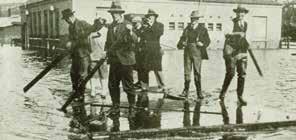
All information gathered from the key phases contributed to the development of the Plan. A diagram showing how this information was used is below.
Draft My Place My Future Plan
The way that information was gathered was structured around the pillars; this worked well as a way of guiding conversations. However, it became problematic to structure the Strategic Action Areas and Strategies around these. This was because many of the pillars related to traditional ways of viewing the distribution of responsibilities and it was difficult to acknowledge the way that each of the pillars interacted with each other. Instead, the pillars informed the development of the Strategic Action Areas.

“BUILDING STRONG RELATIONSHIPS ARE VITAL TO ESTABLISH TRUST & CONNECTION”

No, this is not your typical vision statement. However, this is not your typical plan. This vision was selected because:
This vision can be, and will be, explained by many different people using their own voices.
This vision will mean something different to different people. This means that the Plan itself can adapt to these different experiences.
The Northern Suburbs will change, and this Plan needs to be able to change with it. This vision is broad enough that is can adapt as needed.

“THERE ARE MANY POSITIVE COMMUNITY HAPPENINGS IN THE NORTHERN SUBURBS THAT NEED TO BE SUPPORTED AND CELEBRATED”
Why is this Strategic Action Area important?
There is a need for a strategic approach to enterprise growth within the Northern Suburbs that identifies opportunities and makes it easier for enterprises to establish themselves, and to continue to grow and flourish.
This Strategic Action Area is focused on identifying ways to make it easier for enterprises to establish, grow and flourish in a manner that improves the economic status of both the Northern Suburbs and the broader City of Launceston municipality.
What strategies does this include?
Strategies included in this Strategic Action Area include:
1.1 Continue to develop Mowbray as a Major Activity Centre, leveraging its position as a multicultural hub of Launceston;
1.2 Develop and implement a targeted Investment and Development Strategy;
1.3 Enhance innovation and entrepreneurship;
1.4 Make private home ownership more achievable;
1.5 Draw upon research undertaken to inform the Northern Transformation project;
1.6 Ensure there are appropriate mechanisms to bring the education and training sectors together to focus on informing future approaches to increasing educational attainment rates in the Northern Suburbs;
1.7 Investigate mechanisms to identify and support micro-businesses, and address identified gaps; and
1.8 Advocate for alternative adaptable housing models, with a focus on energy efficiency and a wide range of housing types.
What might some of the actions look like?
There are many different actions that can be undertaken to implement the strategies listed above. Some of these actions will be short-term, some medium-term, and some long-term. It is important to be aware that the actions will not seek to duplicate existing programs or services. To ensure this does not occur, a gap analysis will be undertaken before actions are developed.
Some of the actions that may be undertaken include:
• A revision of the Mowbray District Centre Precinct Plan 2013;
• A seven day makeover of the Mowbray shopping precinct;
• Development of a Northern Suburbs Economic Prospectus;
• Implementation of opportunities for micro-businesses (i.e. regular markets);
• Develop and implement a Northern Suburbs Small Business Incentive Program that aims to make it easier for small enterprises to establish themselves in the Northern Suburbs; and
• Review resources available to support events in the Northern Suburbs.
Who is likely to be involved in the actions?
Many parties may be involved in the implementation of these actions. These may include:
• Local, State and Federal government departments;
• Service providers;
• Local Neighbourhood Houses;
• Businesses or entities with a vested interest;
• Economic Development Agencies; and
• Community.

Employment and income data highlight a need for a range of focused strategies aimed at increasing employment rates. Strategies in this Strategic Action Area will aim to do this by focusing on:
• Increasing employment opportunities in specific growth areas;
• Integrating with current strategies and initiatives; and/ or
• Removing barriers to employment.
The growth area identified is Health Care and Social Assistance Industry (i.e. hospitals, medical and other health care services, residential care services and social assistance services).
The second focus of this Strategic Action Area is on sparking and nourishing innovation. “Launceston has a long history of pioneering firsts and overcoming challenges. We believe we can and must build on this history to take advantage of our assets, natural endowments and capabilities so we are in front of (not left behind or ricocheted by) disruptive changes in the world” (2nd Road, A new era of innovation for Greater Launceston).
What strategies does this include?
Strategies included in this Strategic Action Area include:
2.1 Increase adult learning opportunities, including literacy, numeracy, and digital literacy skills;
2.2 Increase skills, qualifications and work readiness in the identified growth areas;
2.3 Increase engagement in employment and education for people aged 25-54 years, and/or within identified cohorts;
2.4 Spark and nourish an interest in innovation and innovative technology, particularly in areas such as sustainability, waste and energy;
2.5 Strengthen mechanisms for employers to identify potential future employees; and
2.6 Model / trial best practice in relation to equal employment opportunities.
What might some of the actions look like?
There are many different actions that can be undertaken to implement the strategies listed above. Some of these actions will be short-term, some medium-term, and some long-term. It is important to be aware that the actions will not seek to duplicate existing programs or services.
To ensure this does not occur, a gap analysis will be undertaken before actions are developed.
Some of the actions that may be undertaken:
• Create specific networking events in the Northern Suburbs for employers to meet with prospective employees;
• Implement targeted adult literacy and numeracy programs;
• Work with education facilities to align the capacity to provide skills and qualifications with forecasted growth areas;
• Provide recommendations on the location of Job Network Agencies; and
• Implement an Innovation Hub in the Northern Suburbs.
Who is likely to be involved in the actions?
Many parties may be involved in the resulting actions. These may include:
• Education providers;
• Local, State and Federal government departments;
• Local Neighbourhood Houses;
• Service providers/ employment agencies;
• Industries that are accessible to the Northern Suburbs; and
• Community.
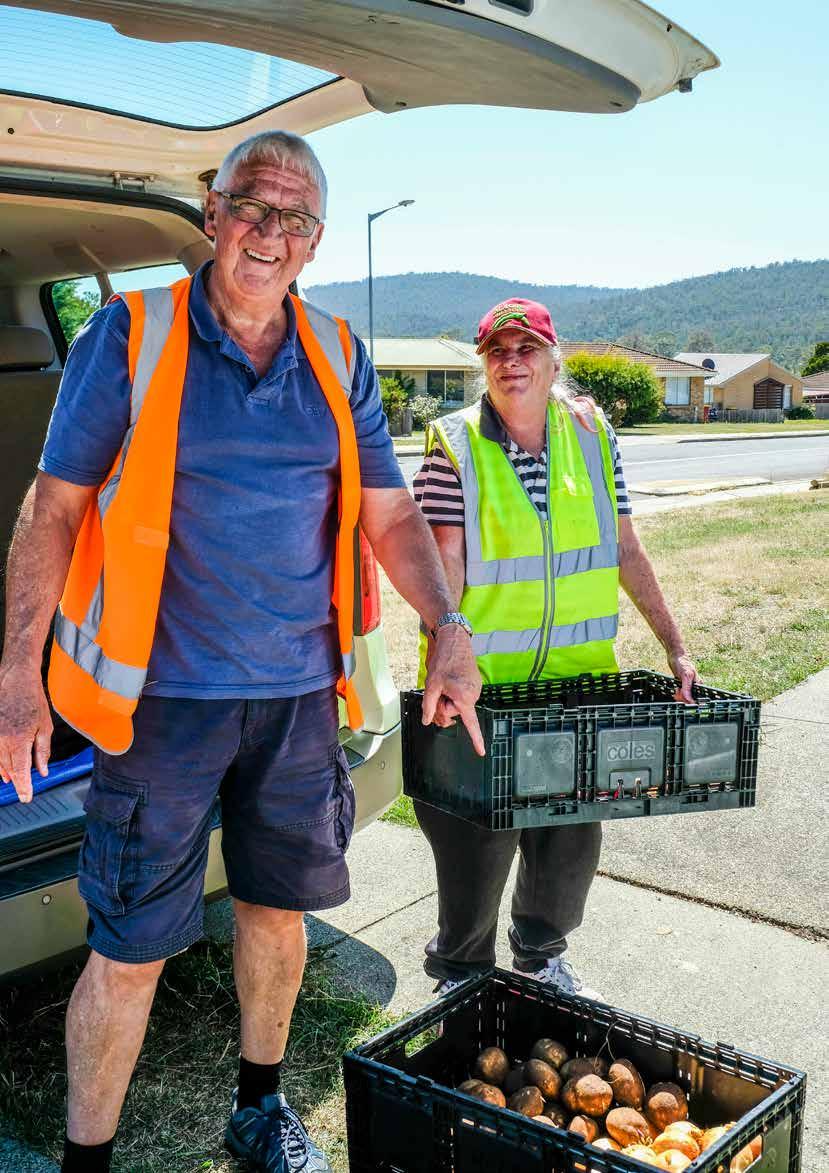
Why is this Strategic Action Area important?
There are many amazing people, activities, programs, and places within the northern suburbs of Launceston, and it is important that these continue to be recognised, harnessed and celebrated.
This Strategic Action Area is focused on supporting the northern suburbs, the City of Launceston municipality, and the broader Tasmanian community, to celebrate the assets within the region and build upon the existing sense of pride.
What strategies does this include?
Strategies included in this Strategic Action Area include:
3.1 Develop a Celebrating My Place My Future Program that identifies strategies to utilise cultural and creative industries to showcase the historical, sporting and cultural assets of the Northern Suburbs to all audiences;
3.2 Seek opportunities to change, or modify, public spaces, to better reflect the activities and people that give meaning to the space;
3.3 Facilitate and support the development of community based social enterprises;
3.4 Develop and implement a Social Inclusion Framework within local government; and
3.5 Within a strength-based framework, facilitate opportunities for community leaders to build upon their skills.
What might some of the actions look like?
There are many different actions that can be undertaken to implement the strategies listed above. Some of these actions will be short-term, some medium-term, and some long-term. It is important to be aware that the actions will not seek to duplicate existing programs or services.
To ensure this does not occur, a gap analysis will be undertaken before actions are developed.
Some of the actions that may be undertaken include:
• A series of programs, events or promotional activities or opportunities that use creative mechanisms to celebrate the communities within the northern suburbs (i.e. photography competitions, food festivals, art programs, historical trail).
• Formal community leadership grant program that enables community leaders to build upon their strengths.
It is also important to note that the Launceston Cultural Strategy will play a key role in developing these actions.
Who is likely to be involved in the actions?
Many parties may be involved in the resulting actions. These may include:
• Education providers;
• Local, State and Federal government departments;
• Local Neighbourhood Houses;
• Service providers;
• Businesses or entities with a vested interest; and
• Community.
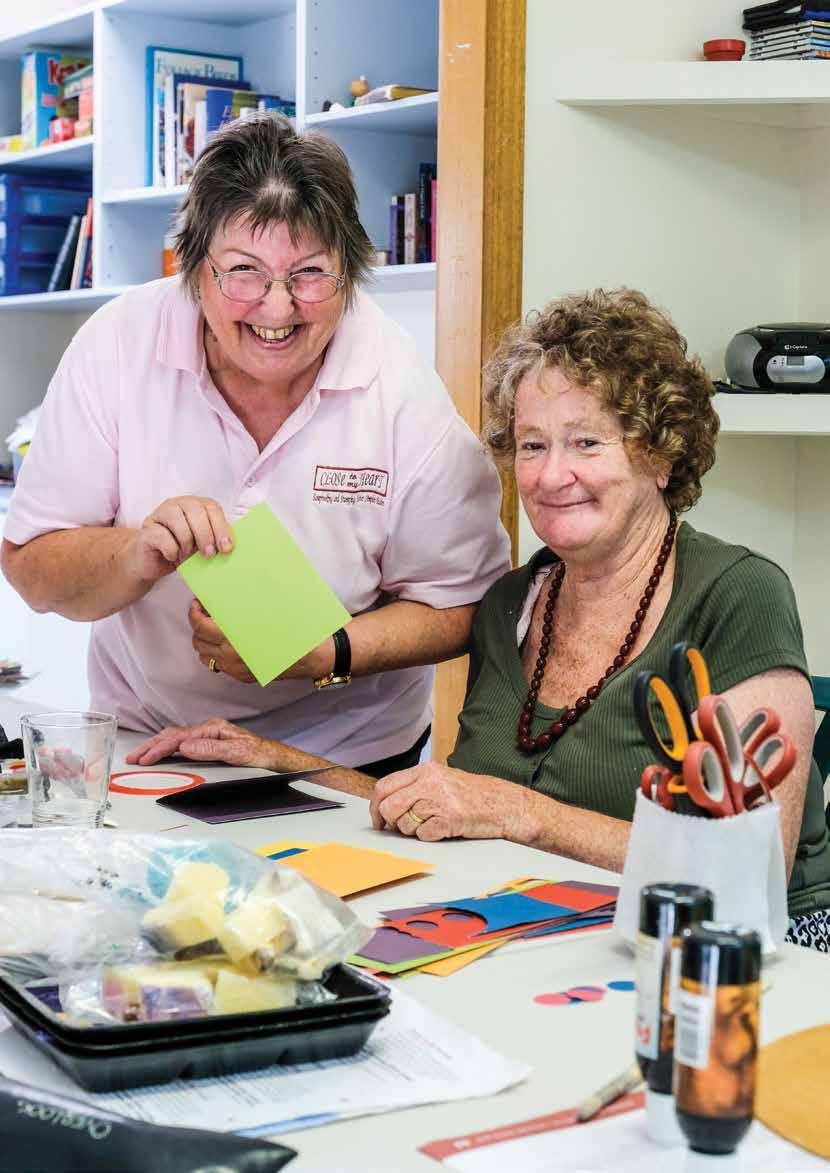
Why is this Strategic Action Area important?
All residents within the City of Launceston municipality should be able to live in an area that facilitates an active and enjoyable lifestyle, feels safe, supports wellness, and enhances a positive sense of belonging within the broader community.
This Strategic Action Area outlines an approach for continuous improvement to the liveability of the northern suburbs, including enhancing civic participation.
What strategies does this include?
Strategies included in this Strategic Action Area include:
4.1 Prioritise the development of the multi-purpose community facility.
4.2 Develop a Northern Suburbs Facility Improvement Plan that outlines:
o Continuous improvement approach to the physical attractiveness of the Northern Suburbs.
o Improved access to community, sport and recreation infrastructure, programs and opportunities.
o Installation of active gym equipment in public spaces.
o Increased access to safe active transport methods and associated infrastructure, with consideration to micro-business opportunities.
o Improvements to road and pedestrian connectivity.
o Broadened recycling facilities.
o Gap analysis of facilities such as public amenities, electric scooter charge points, bus stop infrastructure, public seating, rubbish bins, recreational spaces, public Wi-Fi and public telephones.
o Future requirements, such as electric car facilities.
4.3 Increase the number of targeted road safety campaigns.
4.4 Increase civic participation.
4.5 Increase access to the internet.
There are many different actions that can be undertaken to implement the strategies listed above. Some of these actions will be short-term, some medium-term, and some long-term. It is important to be aware that the actions will not seek to duplicate existing programs or services.
To ensure this does not occur, a gap analysis will be undertaken before actions are developed.
Some of the actions that may be undertaken include:
• Implement community safety programs targeting hooning and unsafe driving practices.
• Improvements to streetscapes within the Northern Suburbs.
• Development of specific active transport trails that connect within the Northern Suburbs, and also connects the Northern Suburbs with areas of interest.
• Repurposing existing spaces to create more usable, enticing recreational spaces.
• Installation of additional security measures.
• Increased opportunities for direct engagement with Council and Councillors.
• Connect Mayfield and Rocherlea via the road network.
• Plan for the next roll-out of Wi-Fi infrastructure.
Who is likely to be involved in the actions?
Many parties may be involved in the resulting actions. These may include:
• Businesses or entities with a vested interest;
• Local, State and Federal government departments;
• Local Neighbourhood Houses;
• Service providers; and
• Community.
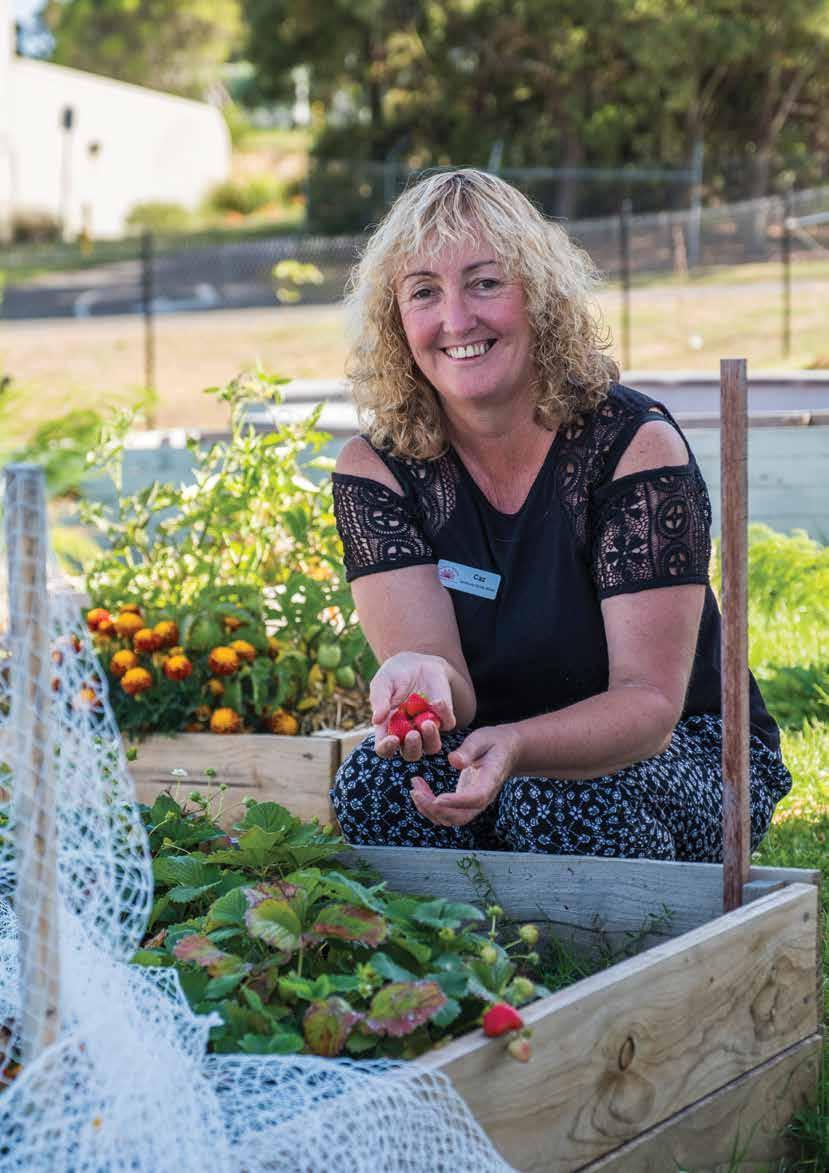
Why is this Strategic Action Area important?
There are some areas which can be influenced through the strategies detailed within this Plan; however, there are also some inter-generational systemic areas that will take many years to reflect the impact of any strategies. The intent of this Strategic Action Area is to focus on breaking this inter-generational cycle by building the capacity of children, their families, and young peopleby focusing both on the first 1000 days and beyond.
What strategies does this include?
Strategies included in this Strategic Action Area include:
5.1 Ensure children, their families, and young people have access to appropriate, friendly, and safe public spaces;
5.2 Continue to focus on the importance of the first 1000 days;
5.3 Identify opportunities for the older generation to empower the younger generation;
5.4 Ensure that children, their families and young people have access to targeted mental health support and tools;
5.5 Increase awareness of needs relating to children in out-of-home care and vulnerable families;
5.6 Increase access to alternative models of education;
5.7 Increase opportunities for young people to obtain meaningful employment; and
5.8 Identify opportunities for children, their families, and young people to meaningfully engage in community, sport and recreation.
There are many different actions that can be undertaken to implement the strategies listed above. Some of these actions will be short-term, some medium-term, and some long-term. It is important to be aware that the actions will not seek to duplicate existing programs or services.
To ensure this does not occur, a gap analysis will be undertaken before actions are developed.
Some of the actions that may be undertaken include:
• Develop youth specific ‘hang-out’ areas;
• Increase children, their families, and young people’s access to targeted mental health support across all age brackets;
• Consider mechanisms to support parents address emerging concerns affecting youth (i.e. gaming, cyberbullying, social media use);
• Implement a program targeted at connecting young people with the potential employees and developing skills required for employment; and
• Enhance mentor type relationships between older and younger people.
Many parties may be involved in the resulting actions. These may include:
• Education providers;
• Businesses or entities with a vested interest;
• Local, State and Federal government departments;
• Local Neighbourhood Houses;
• Service providers; and
• Community.
That when it opened in 1937 the Star Theatre was the first suburban theatre in Launceston and the most modern in the city. It was expected that the theatre would be the centre of clean and healthy entertainment for the suburb, which held a third of Launceston’s population.
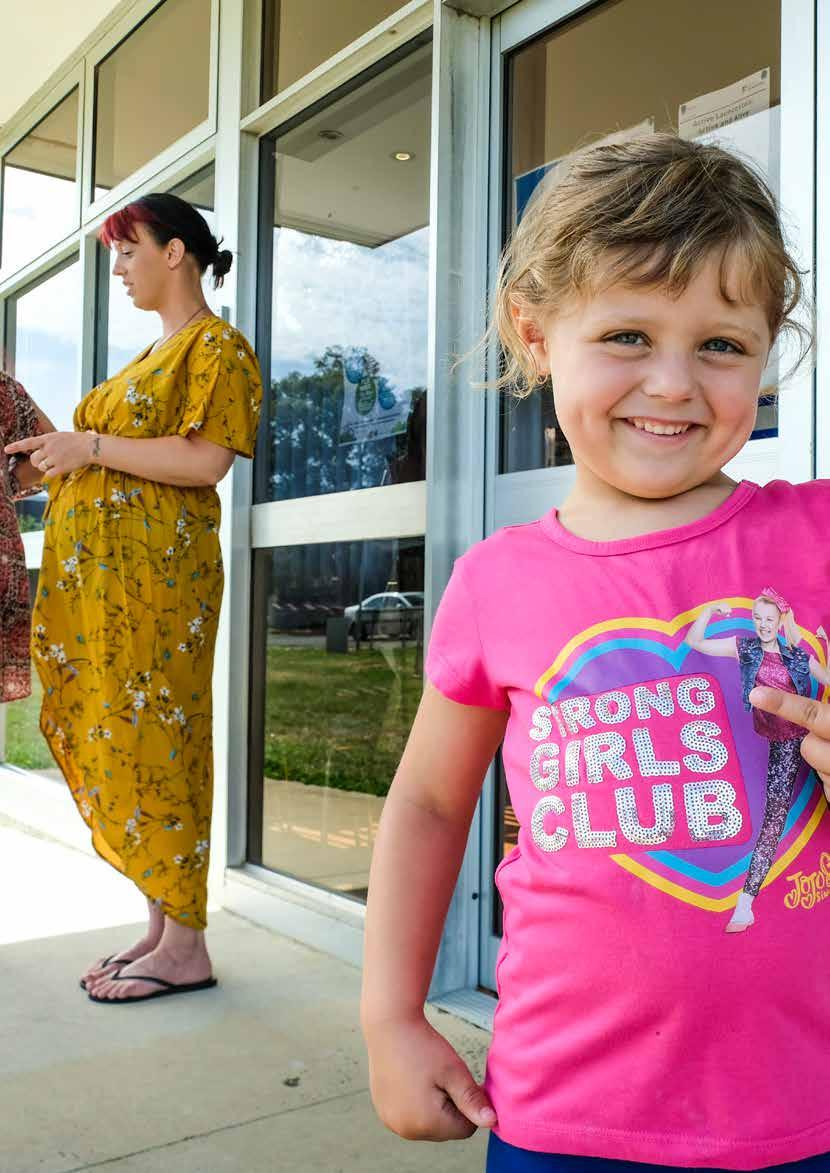
Why is this Strategic Action Area important?
The term access can take on many different meanings, with this interpretation often driven by one’s own experience. This was evident throughout the many community conversations that were had during the collection of the quantitative data.
The main focus areas for access that emerged were:
• Access to ongoing and consistent preventative health services including health promotion and education programs;
• Access to ongoing and consistent education and support to manage an existing condition;
• Access to a GP;
• Access to extra-curricular and leisure activities;
• Access for all;
• Access to a healthy and sustainable food source;
• Access to appropriate housing; and
• Access to transport.
There are many barriers that may prevent access to the listed items; however, they were often reported as linked to things such as finances, transport, or the availability of the service/ need.
The focus of this Strategic Action Area is on increasing access by creating the mechanisms to get the right people, at the right time, having the right conversation - and with access to the right information.
What strategies does this include?
Strategies included in this Strategic Action Area include:
6.1 Create a Northern Suburbs Knowledge Bank that compiles information and studies that relate to the northern suburbs, and is used to assist decision making;
6.2 Increase opportunities to develop partnerships and collaborations with existing providers to ensure that the Northern Suburbs are included in their service areas;
6.3 Review existing mechanisms for increasing health literacy within the Northern Suburbs and implement additional interventions if required;
6.4 Enable the community to easily identify available services, including those relating to health and education;
6.5 Prioritise transport needs across the Northern Suburbs and seek innovative and demand-based ways to address;
6.6 Increase the use of public and active transport; and
6.7 Expand and provide ongoing and consistent funding to established, evidence-based programs in the Northern Suburbs.
There are many different actions that can be undertaken to implement the strategies listed above. Some of these actions will be short-term, some medium-term, and some long-term. It is important to be aware that the actions will not seek to duplicate existing programs or services. To ensure this does not occur, a gap analysis will be undertaken before actions are developed.
Some of the actions that may be undertaken include:
• Identify circumstances where transport is a barrier to access and seek to address;
• Support a targeted program of health promotion and education;
• Work with providers to improve ‘locate a service’ services; and
• Work with the Institute of Social Change invest in a longitudinal study of the health of the Northern Suburbs of Launceston specifically focussing on lifestyle risk behaviours and health outcomes.
Many parties may be involved in the resulting actions. These may include:
• Businesses or entities with a vested interest;
• Local, State and Federal government departments;
• Service providers;
• Local Neighbourhood Houses;
• Health providers; and
• Community.

Success for this Plan is difficult to define, as the communities are so diverse and unique. However, there are some changes that if brought about, will have an impact on the stated vision, and all of the people that live, work and play in the Northern Suburbs
Make it easier for people living in the Northern Suburbs to access employment opportunities.
• Decreased % of the population who are reportedly disengaged.
• Increased % of the population who are employed.
Make it easier for people living in the Northern Suburbs to feel connected to their community.
• Increased % of the population who spend time doing voluntary work.
• Increased % of the population who report feeling part of the community.2
Make it easier for people living in the Northern Suburbs to access, and participate in, the vibrant culture of the Launceston municipality.
Make it easier for people living in the Northern Suburbs to live a healthy lifestyle.
Make it easier for people living in the Northern Suburbs to engage in education.
Make it easier for people living in the Northern Suburbs to access supporting infrastructure.
• Increased # of events held in the northern suburbs.
• Increased attendance at cultural and sporting events, both in the Northern Suburbs and within the broader City of Launceston municipality.
• Decreased # of avoidable hospital presentations.
• Increased % of the population who have completed Year 12 or equivalent.
• Increased school attendance rates.
• Increased % of the population with internet connection.
• Increased # of people who report adequate access to recreational and leisure activities.3
A separate Monitoring and Evaluation Plan will be established. This will identify data sources, additional information to be collected, and how outcomes for strategies listed in the Strategic Action Areas have influenced individual goals.
2 Note that benchmarking information will be gathered between July and December 2019.
3 Note that benchmarking information will be gathered between July and December 2019.
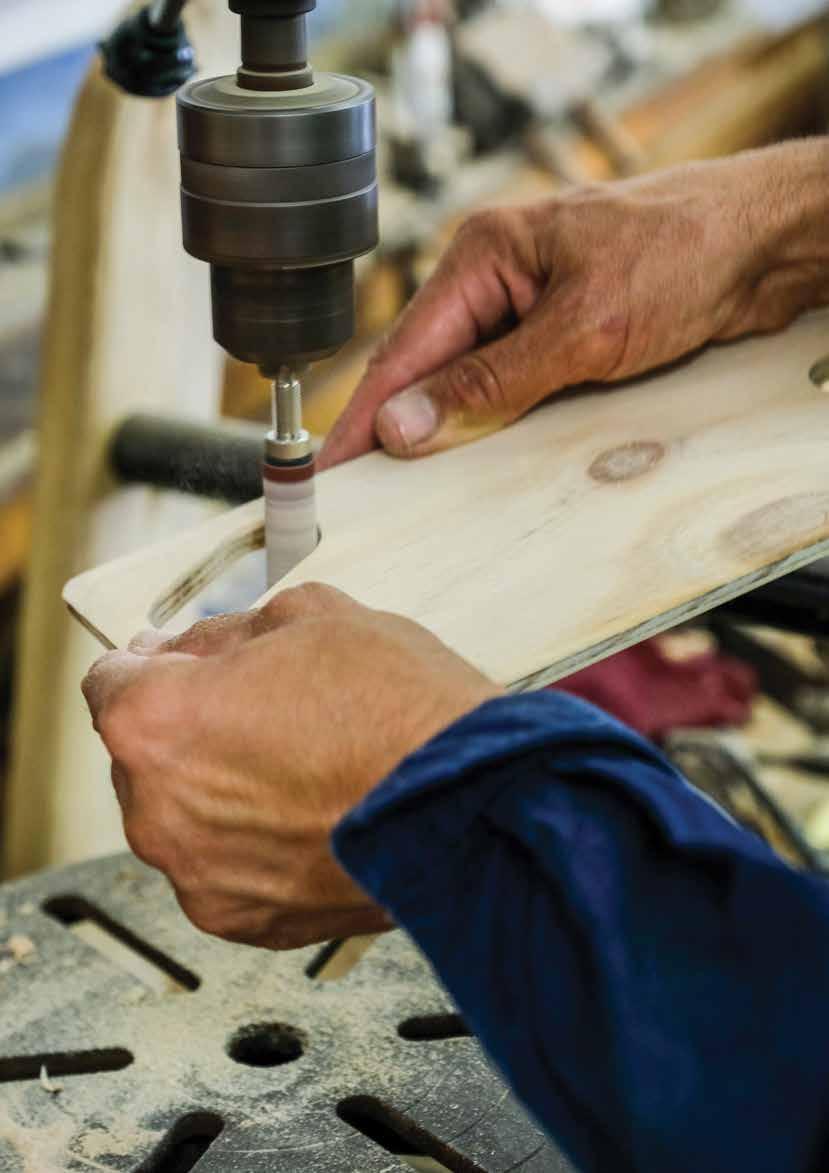
“THERE NEEDS TO BE GREATER ACCESS TO HEALTHY FOOD, RECREATIONAL FACILITIES AND PUBLIC SPACES TO LEAD A HEALTHY LIFESTYLE”
A series of Guiding Principles will be used to guide the implementation of the Plan and provide broad direction for the project team and the accountable agencies. It will also enable community members and organisations to understand the principles behind decision making.
The Guiding Principles are:
• Respect the environment, arts and culture, history, individuals and communities in the Northern Suburbs; Understand the uniqueness of each community in the Northern Suburbs;
• Appropriately balance a strength-based view of each community in the Northern Suburbs with recognition of any challenges;

• Pursue a standard of service excellence and equity of access;
• Foster the agency and empowerment of individuals and communities, and actively seek opportunities for co-design, collaboration and involvement within the development of the Plan and the implementation of the actions;
• Actively seek opportunities to incorporate a broad definition of arts and culture into planning; and
• Remain action orientated and outcomes based.
An implementation plan will be developed to outline the actions that will be taken as result of these Strategic Action Areas. The Implementation Plan will:
• Seek innovative mechanisms to ensure that it remains flexible, relevant and adaptive to emerging needs;
• Be transparent;
• Adhere to the Guiding Principles; and
• Be continually updated to reflect the changing environment.
It is important to acknowledge that the My Place My Future Plan represents a new and innovative way of ensuring the three levels of government work together, and with community, to enable change.
A key focus during implementation will be on developing the right structures to ensure that any required changes can occur smoothly and efficiently.
The Implementation Plan will be supported by a commitment from all levels of government to undertake a shared annual review of all programs and services being delivered in the Northern Suburbs.
It is important that emerging needs are able to receive swift, and direct action. To support this, a framework for making decisions in an effective and efficient manner will be included in the final version of the My Place My Future Plan.
That the first distillery in Port Dalrymple was established on the banks of what became Distillery Creek at Waverley in 1824? It was built by James Towers, then run by his brother Robert and finally David McGowan. The distillery was shut down in 1839 as a result of the Distilleries Prohibition Act.

